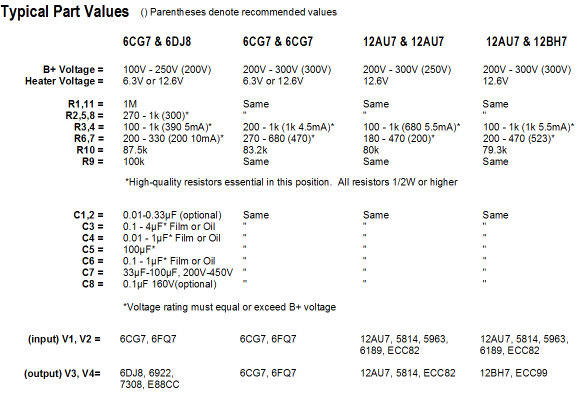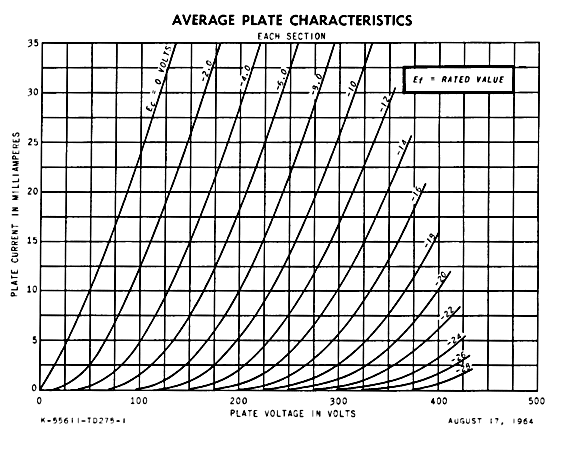| John Broskie's Guide to Tube Circuit Analysis & Design |
31 May 2009
I just could not let May fade into June with only one post for May. My game plan was only to post once I had finished the new Aikido All-in-One HPA/LSA user guide and I had released the PCB and kit for purchasing. Why? The user guide is essential, as a comprehensive user guide offers me the best defense against more e-mail. The problem, of course, is that an all-encompassing user guide takes an all-encompassing amount of time and effort to write. So far, it looks like the new user guide will come in at 40 pages. Yes, I can reuse much from previous user guides, as the Aikido All-in-One HPA/LSA consists of the wedding of the PS-1 regulator and the original Aikido All-in-One design, but, as doctor Frankenstein discovered, cutting and pasting is dangerous. Most of my errors come from cutting and pasting. In addition, I have been fighting the continuing battle of sourcing the best parts at realistic prices, which helps explain why I haven’t released the new FFSR regulator yet (and a few other new items); I await the 630V Wima capacitors' arrival. Well, today I got enough free time to do a few listening experiments. I tried the 6H30 as the output tube in my Aikido All-in-One headphone amplifier. I have played with the 6H30 before and I was never overwhelmed, in spite of its stellar specifications. This time, however, this little powerhouse seemed to deliver the sonic goods. I have been using my Grado SR225s a lot lately (I have been testing solid-state headphone amplifiers) and I have missed some of the extra resolution that the Sennheiser HD650s dispense more freely and which the Stax Lambda Pros reveal effortlessly. Well, with the 6H30 output tubes, I am hearing many of the recording room edits and microphone grounding problems that the Grado headphones usually gloss over. My God, why would one want to hear such sonic blemishes? Wouldn’t that be as crazy as wanting to see a super model sans makeup and photoshop enhancements? Yes, it would be, but understand that with the blemishes also are revealed subtle musical nuances that can make recordings come alive. So, which would you prefer: the company of an actual, warm-blooded, freshly bathed, pimple-adorned model or a glossy photo of the same model tarted up and airbrushed, complete with perfect cheeks wearing an unnatural plastic sheen? (And how many of you, the real sexists, assumed that "the model" was female?) Do not get me wrong here, I like what I have heard so far, but then I always hear the best first, and only later, the worst. I am sure it has something to do with my being a cheerful pessimist. Here is an analogy I made to a TCJer in an e-mail exchange about coupling capacitors: All coupling capacitors are a pain. What I keep experiencing is that at first listening, I am always impressed. But then, a few days or weeks later, the negatives become more obvious.
Here’s a crazy analogy: imagine a young, attractive, neighbor comes out of her house each morning to pick up her newspaper wearing only a skimpy negligee, while you smile and wave to her each morning on your way to your car and work. (I guess you real sexists were right after all.) Each nightgown seems better than the previous, because each reveals a new small portion of flesh that had previously remained hidden. You exclaim,"My God, I have never seen her belly button so clearly before!" And that’s true, but at the same time you could not see some of what you had seen on the days before. Until we invent the Emperor’s New Negligee, all nightgowns are going to reveal and hide a mixed view of the truth underneath. The same holds true of coupling capacitors. Speaking of coupling capacitors, I encountered an intriguing result, after listening to the 32-ohm Grado headphones on my headphone amplifier designed for 300-headphone amplifier. The bass should have fallen away into near nothingness, as the 30µF coupling capacitors that deliver an 18Hz -3dB cutoff with 300-ohm headphone amplifier, should only provide bandwidth down to 166Hz with 32-ohm headphones. Instead, they seem to go much, much lower; to my ear, something closer to 60Hz. How is that possible? One possibility is that since the low note’s upper harmonics are faithfully reproduced, the ear fills in the missing low-frequency fundamentals. Maybe, but that trick seem to only work when the highs are equally attenuated, otherwise an overly bright sound always results. In other words, if you limit low-frequency bandwidth to only 200Hz, then the highs shouldn’t go beyond 2k, if you desire a seemingly flat frequency response. By the way, telephones work on this principle, so adding only a subwoofer or a super tweeter to the phone’s earpiece would be a bad idea. Then it came to me: I have been on a crusade against cathode-resistor bypassing lately and my headphone amplifier is cathode-bypass free, which results in a higher output impedance. Now, the higher output impedance is in series with the headphones, so that the coupling capacitor effectively works into 32 ohms plus Zo; in this case, a total of 132 ohms. Thus, the 30µF coupling capacitor should go down to about 40Hz. I will have to double up on the coupling capacitors, bringing the capacitance up to 60µF and the -3dB cutoff frequency down to 20Hz.
Existing All-in-One User Guide Typo
A 300V B+ and 470-ohm cathode resistors should be just about perfect.
//JRB
|
E-mail from GlassWare Customers
High-quality, double-sided, extra thick, 2-oz traces, plated-through holes, dual sets of resistor pads and pads for two coupling capacitors. Stereo and mono, octal and 9-pin printed circuit boards available. Aikido PCBs for as little as $24 http://glass-ware.stores.yahoo.net/
Support the Tube CAD Journal & get an extremely powerful push-pull tube-amplifier simulator for TCJ Push-Pull Calculator
TCJ PPC Version 2 Improvements Rebuilt simulation engine *User definable
Download or CD ROM For more information, please visit our Web site : To purchase, please visit our Yahoo Store:
|
|||
| www.tubecad.com Copyright © 1999-2009 GlassWare All Rights Reserved |





























